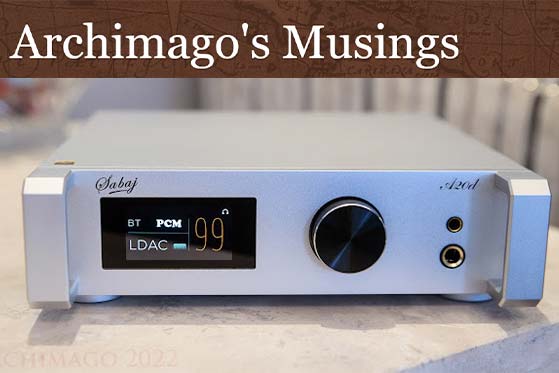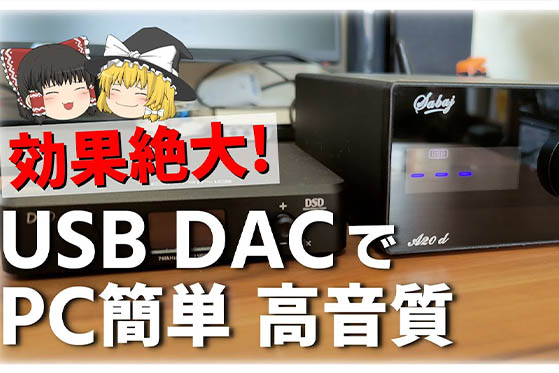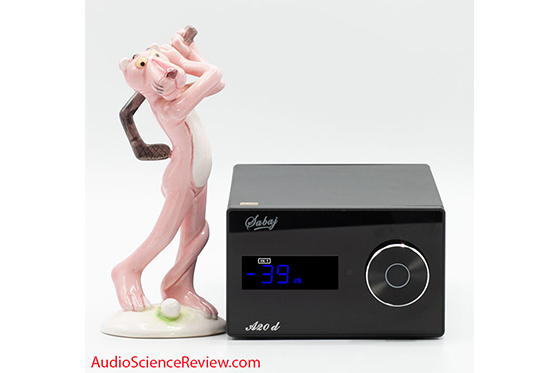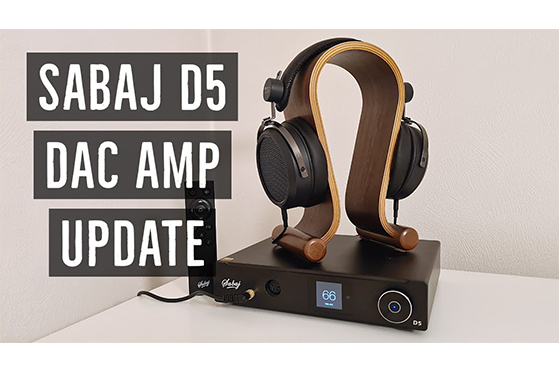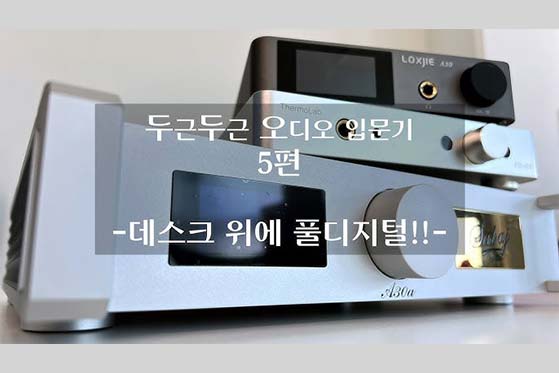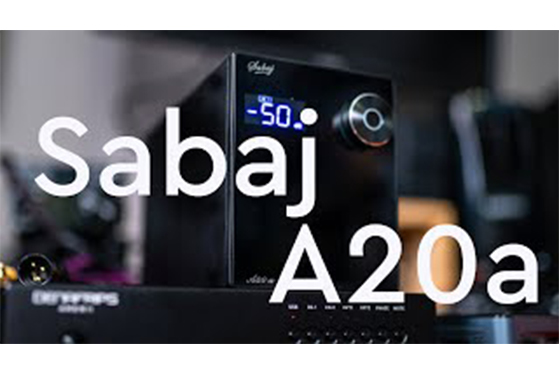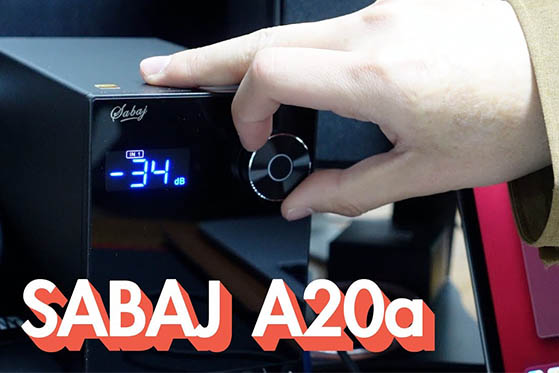Company News
Review and Measurements of Sabaj D5 DAC & Amp
Published: 2019-08-10 Views: 3045
This is a review and detailed measurements of the Sabaj D5 DAC and balanced headphone amplifier. It was kindly sent to me by the company. The D5 costs US $470 on Amazon in US. It uses the top of the line, ESS ES9038Pro DAC chip. So in theory, performance should be excellent.
The D5 is fairly typical of DACs at this price point although some attempt has been made to make it more unique:

There is a very sharp OLED display. Alas, the font is small which is fine for menu adjustment. For status display as you see above, I wish they had used much, much larger font for the volume level instead of that large symbol.
There are both 1/4 headphone output and 4-pin "balanced" XLR headphone out. You have to select each one separately in the menu together with Line Out in the back.
The menus are easy to navigate with the click button and wheel. Hold the button down to exit the current menu.
A remote control comes with it which I did not use but looks identical to that of Topping, etc. but with slightly different labeling.
Back panel shows the addition of I^2S input in addition to typical ins and outs we expect:

There is no Bluetooth input however which is becoming standard in these products.
Power supply is internal as I like to see in this price range. The FCC and CE regulatory marks look legitimate to me.
DAC Audio Measurements
Let's test the DAC portion first with XLR output. Sabaj had sent me a snapshot of the Dashboard to me and I was disappointed when I could not get close to the SINAD rating they had. I then read on their website something to the effect of heatsinks are used and hence the unit needs 30 minutes to warm up to required temps. I usually don't put much weight on such comments but here, it was a real deal. After around 30 minutes while I was doing other things, performance jumped way up:

As I noted, the cold SINAD (signal over noise and distortion) was around 107 dB or 12 dB worse. At that rating the unit would have blended into a mass of other "good" DACs. But at 119, it catapults to the top of the class:

This is stunningly good performance for such a low cost combination DAC and headphone amplifier!
Highest level distortion spikes are at around -130 dB which is well past what we need for "provable" audible transparency.
Unbalanced RCA output was just slightly behind:

As expected, some mains interference is running around although once again, their levels are extremely low at -130 dB.
Frequency response was flat, subject to the filter in use:

Jitter test shows fair bit of sidebands:

But some of this is due to very low noise floor which exposes what we would otherwise see. And at any rate, the levels are well below -130 dB for the most part so no audible impact whatsoever.
Our 32-tone display shows the same superlative performance:

Linearity test displays excellent accuracy down to 20 bits/-120 dB:

Distortion versus frequency likewise shows a very clean spectrum:

Is it all perfect? Well, no. Intermodulation test shows the classic "ESS IMD Hump" where distortion rises at mid levels:

It is a shame as the graph starts with very low levels of IMD/noise. And it also ends that way with very low distortion.
We can change the tones to 19 and 20 khz and see what intermodulation shows up there:

My template for this test happened to have the performance of recently reviewed, boutique Totaldac d1-six DAC in blue. The d1-six retails for over US $14,000 yet this $460 DAC runs circles around it. It has much lower noise and distortion allowing all the detail in your music to get through the DAC unimpeded. Worst case distortion in D5 is at -115 dB which once again, crosses provably transparent performance.
There are a bunch of reconstruction filters you can select. Here is what they do to your frequency response:

"Fast Linear" is the out of box default.
Dynamic range test shows the D5 to be one quiet DAC:

Headphone Amplifier Audio Measurements
Let's start with our dashboard view with 2 volts output out of 1/4 XLR headphone out:

Due to use of unbalance input on my analyzer, we see fair bit of mains noise. The second harmonic at -112 dB though sets the limit more or less. This is very good performance although a good bit below our class leading headphone amplifiers (JDS Labs Atom, etc.).
Most important measurement for headphones is power versus distortion. Let's start with 300 Ohm load which represents high impedance headphones and ability of the amp to generate high voltages:

We have very clean power up to max level of 56 milliwatts. I like to see over 100 milliwatts here as the Topping DX3 Pro provides.
Switching to the other extreme of 33 ohm, emphasizing current delivery we get:

This is better. While there is some rise in distortion, we get closer to that of Topping DX3 Pro at 0.4 watts.
Switching to XLR output using 50 ohm load we have:

That is a healthy 1.3 watts and should be able to drive a lot of inefficient headphones. Some distortion mechanism sets in that limits the low end to -100 dB. This is excellent but had that not been there, the D5 could have unseated many other products from their perches.
Channel balance is perfect as one would expect from a combo DAC+amp that can use the DAC for volume control:

There are only 40 steps though and the knob moves fast so you may not have the fine control you have with some other competitors.
Edit: forgot to post the output impedance:

Listening Tests
The listening tests mirrored that of the measurements. With Sennheiser HD-650, there was very clean output until there was no more. You could not create a sensation of bass notes in your ear lobes. But what was there was "enough."
But what was there was "enough."
With Hifiman HE-400i the situation improved a lot. There was more volume to be had and the resolution and lack of distortion was a pleasure to listen to.
Conclusions
The Sabaj D5 is a very well-engineered DAC and headphone amplifier. It nearly outperforms every DAC I have ever tested! The ESS ES9038Pro when implemented well (which is not common) brings stunningly low levels of distortion which shows here. Alas, it also brings the IMD hump which I blame on ESS for not working out before unleashing the design on implementers. If Sabaj and incorporate the fix that others are starting to roll out, it would have a complete game changer on their hands, obsoleting products at almost any price range!
The headphone output is simply very good. It doesn't break boundaries like the DAC side does but what is there is absolutely clean and distortion free. Only a person with very low efficiency headphone and/or need to play extremely loud would want to get something better. And if so, you have a fantastic DAC to drive whatever that is.
The only odd thing is having to leave the unit on for a few minutes for it to achieve its best performance. Then again even its "cold" performance is likely transparent enough.
Needless to say, It is my pleasure to highly recommend the Sabaj D5. A great example of a well engineered product at a very reasonable price.
-----------
As always, questions, comments, recommendations, etc. are welcome.
Folks, I am in trouble! Google has extended its language translator to go from English to Panther language. One of my panthers stole my phone, brought up these reviews and read the translated version of all of these lame jokes about them! They are all angry as you can imagine. I like to treat them to some ice cream to get them to forget about it all but am short of cash. Please donate what you can as to save my behind from angry bites!!! https://www.audiosciencereview.com/forum/index.php?threads/how-to-support-audio-science-review.8150/
The D5 is fairly typical of DACs at this price point although some attempt has been made to make it more unique:
There is a very sharp OLED display. Alas, the font is small which is fine for menu adjustment. For status display as you see above, I wish they had used much, much larger font for the volume level instead of that large symbol.
There are both 1/4 headphone output and 4-pin "balanced" XLR headphone out. You have to select each one separately in the menu together with Line Out in the back.
The menus are easy to navigate with the click button and wheel. Hold the button down to exit the current menu.
A remote control comes with it which I did not use but looks identical to that of Topping, etc. but with slightly different labeling.
Back panel shows the addition of I^2S input in addition to typical ins and outs we expect:
There is no Bluetooth input however which is becoming standard in these products.
Power supply is internal as I like to see in this price range. The FCC and CE regulatory marks look legitimate to me.
DAC Audio Measurements
Let's test the DAC portion first with XLR output. Sabaj had sent me a snapshot of the Dashboard to me and I was disappointed when I could not get close to the SINAD rating they had. I then read on their website something to the effect of heatsinks are used and hence the unit needs 30 minutes to warm up to required temps. I usually don't put much weight on such comments but here, it was a real deal. After around 30 minutes while I was doing other things, performance jumped way up:
As I noted, the cold SINAD (signal over noise and distortion) was around 107 dB or 12 dB worse. At that rating the unit would have blended into a mass of other "good" DACs. But at 119, it catapults to the top of the class:
This is stunningly good performance for such a low cost combination DAC and headphone amplifier!
Highest level distortion spikes are at around -130 dB which is well past what we need for "provable" audible transparency.
Unbalanced RCA output was just slightly behind:
As expected, some mains interference is running around although once again, their levels are extremely low at -130 dB.
Frequency response was flat, subject to the filter in use:
Jitter test shows fair bit of sidebands:
But some of this is due to very low noise floor which exposes what we would otherwise see. And at any rate, the levels are well below -130 dB for the most part so no audible impact whatsoever.
Our 32-tone display shows the same superlative performance:
Linearity test displays excellent accuracy down to 20 bits/-120 dB:
Distortion versus frequency likewise shows a very clean spectrum:
Is it all perfect? Well, no. Intermodulation test shows the classic "ESS IMD Hump" where distortion rises at mid levels:
It is a shame as the graph starts with very low levels of IMD/noise. And it also ends that way with very low distortion.
We can change the tones to 19 and 20 khz and see what intermodulation shows up there:
My template for this test happened to have the performance of recently reviewed, boutique Totaldac d1-six DAC in blue. The d1-six retails for over US $14,000 yet this $460 DAC runs circles around it. It has much lower noise and distortion allowing all the detail in your music to get through the DAC unimpeded. Worst case distortion in D5 is at -115 dB which once again, crosses provably transparent performance.
There are a bunch of reconstruction filters you can select. Here is what they do to your frequency response:
"Fast Linear" is the out of box default.
Dynamic range test shows the D5 to be one quiet DAC:
Headphone Amplifier Audio Measurements
Let's start with our dashboard view with 2 volts output out of 1/4 XLR headphone out:
Due to use of unbalance input on my analyzer, we see fair bit of mains noise. The second harmonic at -112 dB though sets the limit more or less. This is very good performance although a good bit below our class leading headphone amplifiers (JDS Labs Atom, etc.).
Most important measurement for headphones is power versus distortion. Let's start with 300 Ohm load which represents high impedance headphones and ability of the amp to generate high voltages:
We have very clean power up to max level of 56 milliwatts. I like to see over 100 milliwatts here as the Topping DX3 Pro provides.
Switching to the other extreme of 33 ohm, emphasizing current delivery we get:
This is better. While there is some rise in distortion, we get closer to that of Topping DX3 Pro at 0.4 watts.
Switching to XLR output using 50 ohm load we have:
That is a healthy 1.3 watts and should be able to drive a lot of inefficient headphones. Some distortion mechanism sets in that limits the low end to -100 dB. This is excellent but had that not been there, the D5 could have unseated many other products from their perches.
Channel balance is perfect as one would expect from a combo DAC+amp that can use the DAC for volume control:
There are only 40 steps though and the knob moves fast so you may not have the fine control you have with some other competitors.
Edit: forgot to post the output impedance:
Listening Tests
The listening tests mirrored that of the measurements. With Sennheiser HD-650, there was very clean output until there was no more. You could not create a sensation of bass notes in your ear lobes.
With Hifiman HE-400i the situation improved a lot. There was more volume to be had and the resolution and lack of distortion was a pleasure to listen to.
Conclusions
The Sabaj D5 is a very well-engineered DAC and headphone amplifier. It nearly outperforms every DAC I have ever tested! The ESS ES9038Pro when implemented well (which is not common) brings stunningly low levels of distortion which shows here. Alas, it also brings the IMD hump which I blame on ESS for not working out before unleashing the design on implementers. If Sabaj and incorporate the fix that others are starting to roll out, it would have a complete game changer on their hands, obsoleting products at almost any price range!
The headphone output is simply very good. It doesn't break boundaries like the DAC side does but what is there is absolutely clean and distortion free. Only a person with very low efficiency headphone and/or need to play extremely loud would want to get something better. And if so, you have a fantastic DAC to drive whatever that is.
The only odd thing is having to leave the unit on for a few minutes for it to achieve its best performance. Then again even its "cold" performance is likely transparent enough.
Needless to say, It is my pleasure to highly recommend the Sabaj D5. A great example of a well engineered product at a very reasonable price.
-----------
As always, questions, comments, recommendations, etc. are welcome.
Folks, I am in trouble! Google has extended its language translator to go from English to Panther language. One of my panthers stole my phone, brought up these reviews and read the translated version of all of these lame jokes about them! They are all angry as you can imagine. I like to treat them to some ice cream to get them to forget about it all but am short of cash. Please donate what you can as to save my behind from angry bites!!! https://www.audiosciencereview.com/forum/index.php?threads/how-to-support-audio-science-review.8150/
